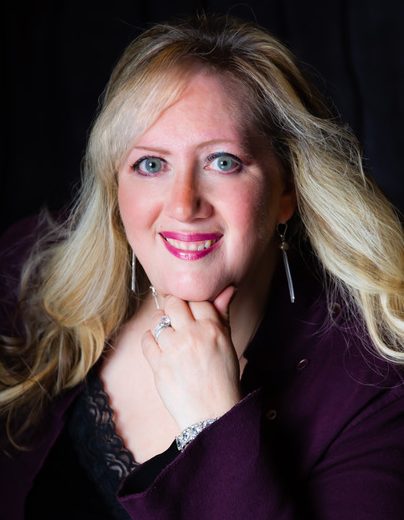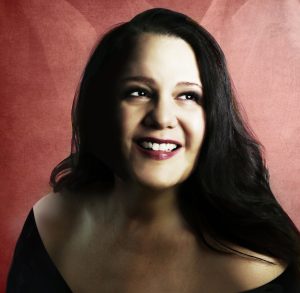Bistro Bits: There Are Many Ways to Approach a Tribute Show—Here Are Two
Singers preparing a tribute show, whether they’re celebrating the tune list of a songwriter or feting the career of a performer, have a number of decisions to make.
Do they want to talk about the subject’s biography—perhaps telling the life story chronologically? Maybe they prefer to organize the program by looking at several components of a writer or singer’s artistry: their comedic chops, their skill with a love song, and so forth. Or do they prefer to perform the artist’s music without much talk at all?
Will they focus mostly on songs closely associated with the artist or do a deep dive for forgotten gems? Or will they aim to balance the well-known and the obscure?
To what degree do singers want to include themselves in the mix: talking about what the artist’s songs mean to them personally?
If the tribute is to a vocalist, should a performer mimic that singer or present the material in their own voice?
Today’s column checks in on two recent tribute shows—Renee Katz’s Irving Berlin celebration and Vicki Burns’s remembrance of jazz singer Anita O’Day—to see how they’ve handled the challenge.
Renee Katz Sings Irving Berlin
Composer/lyricist Irving Berlin was nothing if not prolific. His career went on for decades, and he lived, famously, to age 101. I can recall my elementary-school music teacher remarking on his longevity in the mid-1960s, a generation before he passed (in 1989). Clearly, a wealth of material is available from his catalog to create all manner of tribute shows. So, determining what should be included and what can be omitted surely takes some time and effort.
In her recent show at Don’t Tell Mama, Lost in His Arms: Renee Katz Sings Irving Berlin (directed by Jeff Harnar), Renee Katz presents Berlin’s material largely by pairing songs, twining them in mashups, or including them in a medley. In fact, only five of the fifteen selections on Katz’s setlist are purely stand-alone numbers!
This strategy allows Katz, Harnar, and musical director Christopher Marlowe not only to increase the number of songs heard within an hour but also to make some interesting thematic matches—such as pairing the devilish “Get Thee Behind Me Satan” (1934) with the equally diabolical “Pack Up Your Sins and Go to the Devil” (1922). And then there’s an ambitious dance medley, showcasing six of Berlin’s most popular and enduring up-tempo songs, including “Puttin’ On the Ritz” (1927) and “Cheek to Cheek” (1934). (This medley was originally created by Marlowe and the late Nancy LaMott.) It may have been a bit off balance for Katz and company to rely to such a large degree on these song pairings and groupings, but I didn’t find this bothersome.
The song selections were not presented chronologically, although Katz did perform some of Berlin’s early “ethnic” songs near the top of the performance. One such number—1911’s “Yiddisha Nightingale”—was the oldest number in the show. 1986’s forever timely “Till This Crazy World Is Sane Again” was the newest (Berlin had written only the lyric for this song; Marlowe, more recently, set it to music.)
This show has a workable mix of well-known and lesser-known numbers. Some of Berlin’s most iconic songs (“White Christmas,” “There’s No Business Like Show Business”) are absent, but I didn’t feel a bit cheated by their omission. Katz did include a rendition of “God Bless America,” sung in Yiddish.
Katz’s voice—full and warm, partly “legit-ish” and partly “showtune stylist”—works best, I think, on the dramatic ballads. She is particularly successful with the “Reaching for the Moon” (1930) / “Yiddisha Nightingale” pairing. The lighter, more sprightly numbers seem to me not quite as ideal for her vocally, but she makes them work (I especially liked the “Cheek to Cheek” portion of the dance medley.) Her diction is immaculate throughout—you can understand every word.
Katz has strong support from her two musicians. Marlowe’s playing on 1950’s “It’s a Lovely Day Today”—part of a Call Me Madam pairing, along with “The Best Thing for You (Would Be Me”)—and 1932’s “How Deep Is the Ocean (How High Is the Sky)” (paired with a 1906 Maurice Ravel composition, “Une Barque sur l’Océan”) is flamboyant and stirring. Ritt Henn strums a ukulele for Katz on some numbers, along with his usual fine work as bassist. He also sings charmingly in a counter-melody with her on “Play a Simple Melody” (1914).
Katz personalizes the material near the end of the set by speaking about her late father, explaining that she finds commonalities between him and Berlin. She notes that both were resourceful and resilient men.
My biggest reservation about the show is that, in her patter, Katz doesn’t speak much about Berlin’s life and career. There’s not a great deal about his childhood, his marriages and family, or his professional accomplishments. At the performance I saw, there was one quite interesting (and somewhat amusing) anecdote about Fanny Brice rejecting his now hundred-year-old song “Yiddisha Eskimo” (could this song, perhaps, have been too un-PC even for 1924?). It would have been nice to have had a bit more such detail: vivid, spoken reminders of why we still remember and continue to sing and listen to Berlin’s music.
But, when considered in a different light, maybe the lack of biographical content is not such a horrible problem. In the end, Berlin’s best songs, standing as evidence, make it perfectly clear why he still matters.
Presented at Don’t Tell Mama, 343 W. 46th St., NYC, Sept, 21, Nov. 12, & 16, 2024.
Vicki Burns Celebrates Anita O’Day
In Stella by Startlight at The Green Room 42, Vicki Burns—accompanied by the other three members of her quartet—sang four numbers from the repertoire of jazz icon Anita O’Day before introducing any significant biographical info about the singer. Burns did, however, offer a few spoken remarks about those songs, noting that some were carefully patterned after O’Day arrangements, allowing just enough room for her and her musicians to put a different spin on the material.
It seemed to me a good strategy to hold off for a while with the bio stuff and open with a big chunk of music. Burns is a very likable presence and an open-hearted singer: one who brings to a song as many aspects of her musicality as are necessary to make the number shine. And she has a lot of aspects to draw on.
So…. Patter can wait. Singing can proceed!
Burns’s opener, “Sweet Georgia Brown” (Ben Burnie, Maceo Pinkard, Kenneth Casey), followed the basic O’Day blueprint from the noteworthy 1958 Newport Jazz Festival performance (captured in the documentary film Jazz on a Summer’s Day) with three iterations of the theme—the first of which used a different melody from the one we all know, accompanied at first only by quiet drumming from Phil Stewart). The rest of the players (pianist Art Hirahara and bassist Steve Wood) joined in on the second statement, which reverted to the better-known melody. The third statement sped up the number considerably: to double time it seemed. The follow-up selection to “Sweet Georgia…” was the scatty “Tea for Two” (Vincent Youmans, Irving Caesar), which raced from the beginning and included the same be-boppy “eeeh-eeeh” playfulness heard in O’Day’s Newport festival version.
But although Burns was paying tribute to her subject in song, (and in some cases recreating her arrangements), she wasn’t impersonating O’Day. She was her own woman, with her own voice.
When she did stop the music to tell some of O’Day’s life story, her remarks were seemingly off the cuff. She said she would soon tell us how O’Day went “cold turkey” to beat her heroin addiction, then decided—no—she wanted to tell that story now, not later. And why shouldn’t she? I appreciate those jazz singers—and Burns is a good example—who are skillful raconteurs and who don’t feel the need to make their patter overly “scripty,” as sometimes happens with cabaret singers. Burns at this show was “in the moment” every moment.
Much like Katz, who mentioned that her Irving Berlin show marked the first time she’d launched a show since her father’s death, Burns told the audience of the very recent passing of her mother, to whose memory she dedicated this performance. She personalized the material: mentioning that she came to know O’Day because of her parents’ extensive record collection. And she included a memorable anecdote about almost meeting O’Day in person, in a small, nearly empty Boston jazz club in 1981.
Standout selections from later in the show included a mashup of two George and Ira Gershwin numbers: “’S Wonderful” and “They Can’t Take That Away from Me.” This pairing was sheer joy. For her heart-struck take on “Body and Soul” (Johnny Green, Edward Heyman, Frank Eyton, Robert Sour), the singer showed us her acting skills, making the line “My life a wreck you’re making” sound like a cry in the night.
Hirahira’s vigorous playing throughout the set was exhilarating—but he was equally at home with a more restrained, quiet approach on “Body and Soul.” Wood delivered an impressive solo on “Star Eyes” (Gene de Paul, Don Raye) and really swung on the up-tempo section of “Stella by Starlight” (Victor Young, Ned Washington). Stewart had fun with Burns during several call-and-response moments throughout the show: percussionist conversing playfully with scat artist.
It was interesting to observe Stewart’s face on some of these numbers, when an irrepressible smile would appear, suggesting that some sly jokes were hidden deep in the music: punch lines that only he was privy to.
Then again, I was probably smiling through this music as well.
Presented at The Green Room 42, at Yotel , 570 10th Ave., NYC, Oct. 12, 2024.
###
About the Author
Mark Dundas Wood is an arts/entertainment journalist and dramaturg. He began writing reviews for BistroAwards.com in 2011. More recently he has contributed "Cabaret Setlist" articles about cabaret repertoire. Other reviews and articles have appeared in theaterscene.net and clydefitchreport.com, as well as in American Theatre and Back Stage. As a dramaturg, he has worked with New Professional Theatre and the New York Musical Theatre Festival. He is currently literary manager for Broad Horizons Theatre Company.






